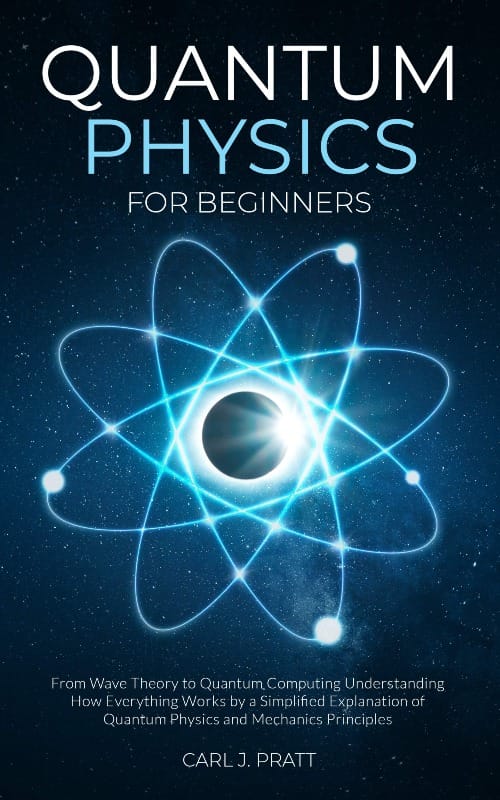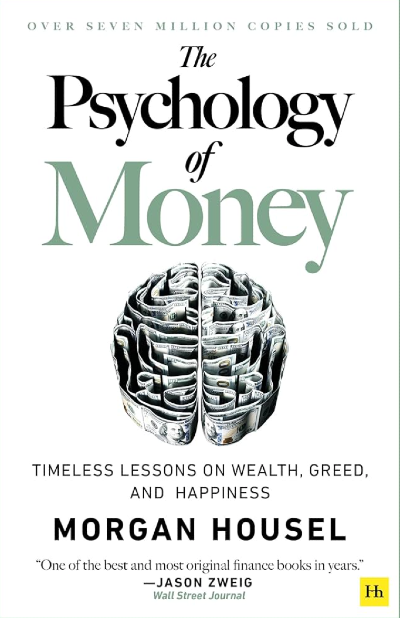📚 Book Review: Quantum Physics for Beginners

What I learned about Quantum Physics that made my brain hurt in a good way.
Most of us think quantum physics is something only genius scientists with wild hair and lab coats talk about. But Quantum Physics for Beginners breaks it down in a surprisingly readable way, and it showcases those genius scientists. After going through it, I walked away better understanding of the basics, but by no means does that make me an expert. Feynman famously said "if you think you understand quantum mechanics, you don't understand quantum mechanics."
Here are a handful of key concepts that might just change how you see the world.
1. Everything Is Energy — Even You
Quantum physics starts with a wild idea: the entire universe, including you, is made of energy—not solid stuff. What looks like a chair, a rock, or your own hand is really just a collection of teeny-tiny particles flashing in and out of existence. These particles can act like both waves and solid bits (called wave-particle duality), and they don’t settle into one form until someone looks at them. In other words, reality itself is shaped by observation. Pretty mind-blowing, right?
“Reality is just a state of potential… formed only by the observer.”— Page 143
This leads to a strange but powerful idea: your thoughts and attention might actually affect the world around you—at least on the smallest scale. That’s why some people connect quantum physics to mindset and focus, though scientists are still debating how far this connection goes.
2. Wave-Particle Duality
This is a core concept in quantum physics: particles like light or electrons can behave like both particles and waves, depending on how we measure them. It's like saying something can be a baseball and a ripple in water at the same time.
A famous experiment that shows this is the Double-Slit Experiment, where particles seem to “choose” whether to act like waves or particles based on whether they're being observed.
This idea flips classical physics on its head and shows that matter isn't as straightforward as we thought. It also helps explain how atoms and light actually work.
“Light behaves not only as a wave, as was traditionally thought, but also as particles or 'quanta.’” — Page 24
3. Uncertainty Isn’t a Bug — It’s the Rule
In regular life, we expect clear answers. Is the light on or off? Did the cat eat the food or not? But in quantum physics, things are fuzzy. One famous principle, the uncertainty principle, says you can’t know everything about something at once. For example, you can’t perfectly know both where a particle is and how fast it’s moving.
Even weirder? A particle can be in multiple states at once until someone checks on it—a state called superposition. Think Schrödinger’s cat: until you open the box, it’s both alive and dead.
“In the quantum world… the cat exists in a state of superposition.”— Pages 126–127
This uncertainty forces us to see the world differently: not everything is fixed or predictable, and that’s not a problem—it’s just how nature works.
4. We’re All More Connected Than We Think
One of the coolest parts of quantum physics to me is entanglement. When two particles become entangled, they’re mysteriously linked—even if they’re lightyears apart. If one changes, the other does too, instantly. It’s like having a twin who finishes your sentences even from the other side of the galaxy.
“Entangled particles… remain connected across vast distances.”— Page 62
This phenomenon, once called “spooky action at a distance” by Einstein, has real-world uses. It’s the foundation of future tech like quantum computers and super-secure quantum internet. But it also makes you think—maybe we’re all more connected than we realize, not just by wires and signals, but by nature itself.
5. Superposition and Quantum Computing
While we touched on superposition in the Schrödinger’s cat section, it's also worth highlighting how this principle is being used in real technology, especially quantum computing.
In classical computers, a bit is either 0 or 1. But in quantum computers, a qubit can be both 0 and 1 at the same time—that’s superposition. This makes quantum computers incredibly powerful for solving certain problems.
Think of it like this:
A regular computer is like flipping one light switch at a time. A quantum computer is like flipping all the switches at once, seeing every possible outcome.
“These foundational pieces of data are often called quantum bits... unlike classical computer bits, qubits are both one and zero at the same time until they are measured.” — Page 170
Wrap-Up
If this book teaches us anything, it’s that the universe is far stranger and more flexible than it looks. It challenges us to stay curious, question what we think we know, and remember that even the tiniest things can have the biggest impact.





